| In vitro: |
| Food Chem Toxicol. 2014 May;67:187-92. | | Sinapine as an active compound for inhibiting the proliferation of Caco-2 cells via downregulation of P-glycoprotein.[Pubmed: 24607798] | Sinapine, an alkaloid from seeds of the cruciferous species, shows favorable biological activities such as antioxidant and radio-protective activities. However, the inhibitory effect of Sinapine on tumors, and the molecular mechanisms have not been completely understood thus far. In this study, we determined anti-proliferative effects of Sinapine.
METHODS AND RESULTS:
We examined the anti-tumor effects of the combination of Sinapine and doxorubicin. The results of the MTT assay and apoptosis showed that Sinapine increased the sensitivity of Caco-2 cells to doxorubicin in a dose-dependent manner, whereas no or less effect was observed in the cells treated with doxorubicin alone. The combination of Sinapine and doxorubicin had a synergistic effect and increased the cytotoxicity of doxorubicin against Caco-2 cells. Doxorubicin accumulation assay showed that Sinapine increased the intracellular accumulation of doxorubicin in dose-dependent manner. Immunoblotting and QT-PCR analysis showed that Sinapine suppressed P-glycoprotein (P-gp) expression via ubiquitination. A significant correlation was observed between the expression of p-ERK1/2 and P-gp.
CONCLUSIONS:
These results indicated that Sinapine played an important role in the down-regulation of P-gp expression through suppression of FGFR4-FRS2α-ERK1/2 signaling pathway. To our knowledge, this is the first study to show that Sinapine can be used as an effective natural compound for chemo-resistance. | | PLoS One. 2015 Jan 21;10(1):e0116470. | | Characterization of the factors that influence sinapine concentration in rapeseed meal during fermentation.[Pubmed: 25606856] | We analyzed and compared the difference in Sinapine concentration in rapeseed meal between the filamentous fungus, Trametes sp 48424, and the yeast, Saccharomyces cerevisiae, in both liquid and solid-state fermentation.
METHODS AND RESULTS:
During liquid and solid-state fermentation by Trametes sp 48424, the Sinapine concentration decreased significantly. In contrast, the liquid and solid-state fermentation process by Saccharomyces cerevisiae just slightly decreased the Sinapine concentration (P ≤ 0.05). After the solid-state fermented samples were dried, the concentration of Sinapine in rapeseed meal decreased significantly in Saccharomyces cerevisiae. Based on the measurement of laccase activity, we observed that laccase induced the decrease in the concentration of Sinapine during fermentation with Trametes sp 48424. In order to eliminate the influence of microorganisms and the metabolites produced during fermentation, high moisture rapeseed meal and the original rapeseed meal were dried at 90 °C and 105 °C, respectively. During drying, the concentration of Sinapine in high moisture rapeseed meal decreased rapidly and we obtained a high correlation coefficient between the concentration of Sinapine and loss of moisture.
CONCLUSIONS:
Our results suggest that drying and enzymes, especially laccase that is produced during the solid-state fermentation process, may be the main factors that affect the concentration of Sinapine in rapeseed meal. | | Food Chem . 2019 Mar 15;276:768-775. | | Determination of sinapine in rapeseed pomace extract: Its antioxidant and acetylcholinesterase inhibition properties[Pubmed: 30409660] | | Abstract
Sinapine is the main secondary metabolite present in rapeseed pomace (RSP) with its concentration being dependent on rapeseed processing, growing conditions, extraction parameters and the country of origin. Here we report, the concentration of Sinapine from an extract of defatted RSP harvested in the North East of Scotland. Using liquid chromatography tandem mass spectrometry, the most abundant phenolic compound in the RSP extract was, as expected, Sinapine (109.1 mg/g RSP extract). Additionally, sinapic, caffeic, ferulic and syringic acids were identified (0.159-3.91 mg/g RSP extract). Sinapine together with the phenolics at the concentration present in the RSP extract, exhibited ≥50% activity relative to the extract in antioxidant assays. Furthermore, Sinapine provided plasmid DNA (pBR322) protection, from 2,2'-azobis(2-amidinopropane) dihydrochloride and inhibited acetylcholinesterase activity by 85%. Molecular docking was utilised to explain the inhibitory activity. RSP can be an excellent source of bioactive compounds for pharmaceuticals, food additive and nutraceutical applications.
Keywords: Acetylcholinesterase (AChE); Antioxidant assays; Canola; LC-MS/MS; Phenolic acids; Plasmid DNA (pBR322); Rapeseed pomace; Sinapine. | | Food Funct . 2019 Jun 19;10(6):3637-3649. | | Sinapine reduces non-alcoholic fatty liver disease in mice by modulating the composition of the gut microbiota[Pubmed: 31165837] | | Abstract
Non-alcoholic fatty liver disease (NAFLD) is associated with low-grade chronic inflammation and intestinal dysbiosis. In this study, we investigated the potential benefits of Sinapine, a rapeseed polyphenol known to exert anti-inflammatory and anti-oxidant effects, on high-fat diet (HFD)-induced NAFLD in C57BL/6 J mice and the underlying mechanisms. Four week-old mice were randomly divided into four groups and fed a low-fat diet (LFD), a HFD, a HFD with common rapeseed oil (HFD + CRO) and a HFD with Sinapine in rapeseed oil (HFD + SRO) for 12 weeks. Supplementation with Sinapine reduced the body weight of HFD mice by 10.99%, and decreased the levels of TG and LDL-C by 15.67% and 73.62%, respectively. In addition, Sinapine also suppressed the intestinal NF-κB and TNF-α expressions and enhanced the adipose tissue IRS-1 expression in the HFD mice (P < 0.05). In terms of effects on the gut microbiota, Sinapine induced a decrease in the ratio of Firmicutes to Bacteroidetes and increased the abundance of probiotics, such as Lactobacillaceae, Akkermansiaceae and Blautia, along with metabolite short-chain fatty acid (SCFA)-mediated upregulation of G protein-coupled receptor 43 (GPR43) to inhibit expression of inflammatory factors. Our collective results strongly supported the fact that the utility of Sinapine as a prebiotic agent could prevent gut dysbiosis and obesity-related chronic diseases, such as insulin resistance (IR) and NAFLD. | | Redox Biol . 2020 Jul;34:101554. | | Sinapine, but not sinapic acid, counteracts mitochondrial oxidative stress in cardiomyocytes[Pubmed: 32464499] | | Abstract
Introduction: When confronted to stress or pathological conditions, the mitochondria overproduce reactive species that participate in the cellular dysfunction. These organelles are however difficult to target with antioxidants. A feature of mitochondria that can be used for this is the negatively charged compartments they form. Most of mitochondrion-targeting antioxidants are therefore cationic synthetic molecules. Our hypothesis is that such mitochondriotropic traits might also exists in natural molecules.
Aim: We tested here whether Sinapine, a natural phenolic antioxidant-bearing a permanent positive charge, can target mitochondria to modulate mitochondrial oxidative stress.
Methods: Experiments were performed in-vitro, in-cellulo, ex-vivo, and in-vivo, using cardiac tissue. The sinapic acid -lacking the positively-charged-choline-moiety present in Sinapine-was used as a control. Sinapine entry into mitochondria was investigated in-vivo and in cardiomyocytes. We used fluorescent probes to detect cytosolic (H2DCFDA) and mitochondrial (DHR123) oxidative stress on cardiomyocytes induced with either hydrogen peroxide (H2O2) or antimycin A, respectively. Finally, ROS production was measured with DHE 10 min after ischemia-reperfusion (IR) on isolated heart, treated or not with Sinapine, sinapic acid or with a known synthetic mitochondrion-targeted antioxidant (mitoTempo).
Results: We detected the presence of Sinapine within mitochondria in-vitro, after incubation of isolated cardiomyocytes, and in-vivo, after oral treatment. The presence of sinapic acid was not detected in the mitochondria. Both the Sinapine and the sinapic acid limited cytosolic oxidative stress in response to H2O2. Only Sinapine was able to blunt oxidative stress resulting from antimycin A-induced mtROS. Both mitoTempo and Sinapine improved cardiac functional recovery following IR. This was associated with lower ROS production within the cardiac tissue.
Conclusion: Sinapine, a natural cationic hydrophilic phenol, commonly and substantially found in rapeseed species, effectively (i) enters within the mitochondria, (ii) selectively decreases the level of mitochondrial oxidative stress and, (iii) efficiently limits ROS production during cardiac ischemia-reperfusion.
Keywords: Ischemia-reperfusion; Mitochondria; Natural antioxidant; Oxidative stress. |
|
| In vivo: |
| Food Funct . 2019 Jun 19;10(6):3637-3649. | | Sinapine reduces non-alcoholic fatty liver disease in mice by modulating the composition of the gut microbiota[Pubmed: 31165837] | | Abstract
Non-alcoholic fatty liver disease (NAFLD) is associated with low-grade chronic inflammation and intestinal dysbiosis. In this study, we investigated the potential benefits of Sinapine, a rapeseed polyphenol known to exert anti-inflammatory and anti-oxidant effects, on high-fat diet (HFD)-induced NAFLD in C57BL/6 J mice and the underlying mechanisms. Four week-old mice were randomly divided into four groups and fed a low-fat diet (LFD), a HFD, a HFD with common rapeseed oil (HFD + CRO) and a HFD with Sinapine in rapeseed oil (HFD + SRO) for 12 weeks. Supplementation with Sinapine reduced the body weight of HFD mice by 10.99%, and decreased the levels of TG and LDL-C by 15.67% and 73.62%, respectively. In addition, Sinapine also suppressed the intestinal NF-κB and TNF-α expressions and enhanced the adipose tissue IRS-1 expression in the HFD mice (P < 0.05). In terms of effects on the gut microbiota, Sinapine induced a decrease in the ratio of Firmicutes to Bacteroidetes and increased the abundance of probiotics, such as Lactobacillaceae, Akkermansiaceae and Blautia, along with metabolite short-chain fatty acid (SCFA)-mediated upregulation of G protein-coupled receptor 43 (GPR43) to inhibit expression of inflammatory factors. Our collective results strongly supported the fact that the utility of Sinapine as a prebiotic agent could prevent gut dysbiosis and obesity-related chronic diseases, such as insulin resistance (IR) and NAFLD. |
|


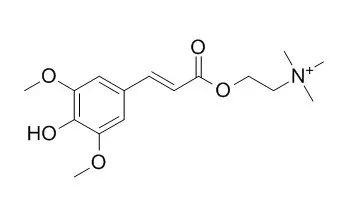

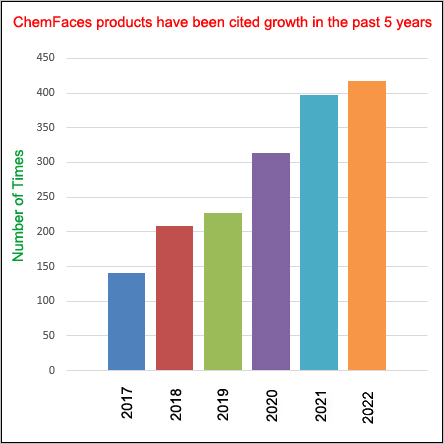
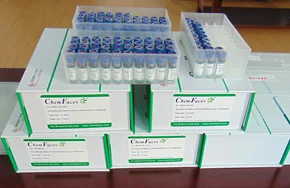
 Cell. 2018 Jan 11;172(1-2):249-261.e12. doi: 10.1016/j.cell.2017.12.019.IF=36.216(2019)
Cell. 2018 Jan 11;172(1-2):249-261.e12. doi: 10.1016/j.cell.2017.12.019.IF=36.216(2019)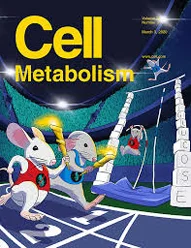 Cell Metab. 2020 Mar 3;31(3):534-548.e5. doi: 10.1016/j.cmet.2020.01.002.IF=22.415(2019)
Cell Metab. 2020 Mar 3;31(3):534-548.e5. doi: 10.1016/j.cmet.2020.01.002.IF=22.415(2019)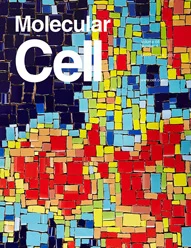 Mol Cell. 2017 Nov 16;68(4):673-685.e6. doi: 10.1016/j.molcel.2017.10.022.IF=14.548(2019)
Mol Cell. 2017 Nov 16;68(4):673-685.e6. doi: 10.1016/j.molcel.2017.10.022.IF=14.548(2019)